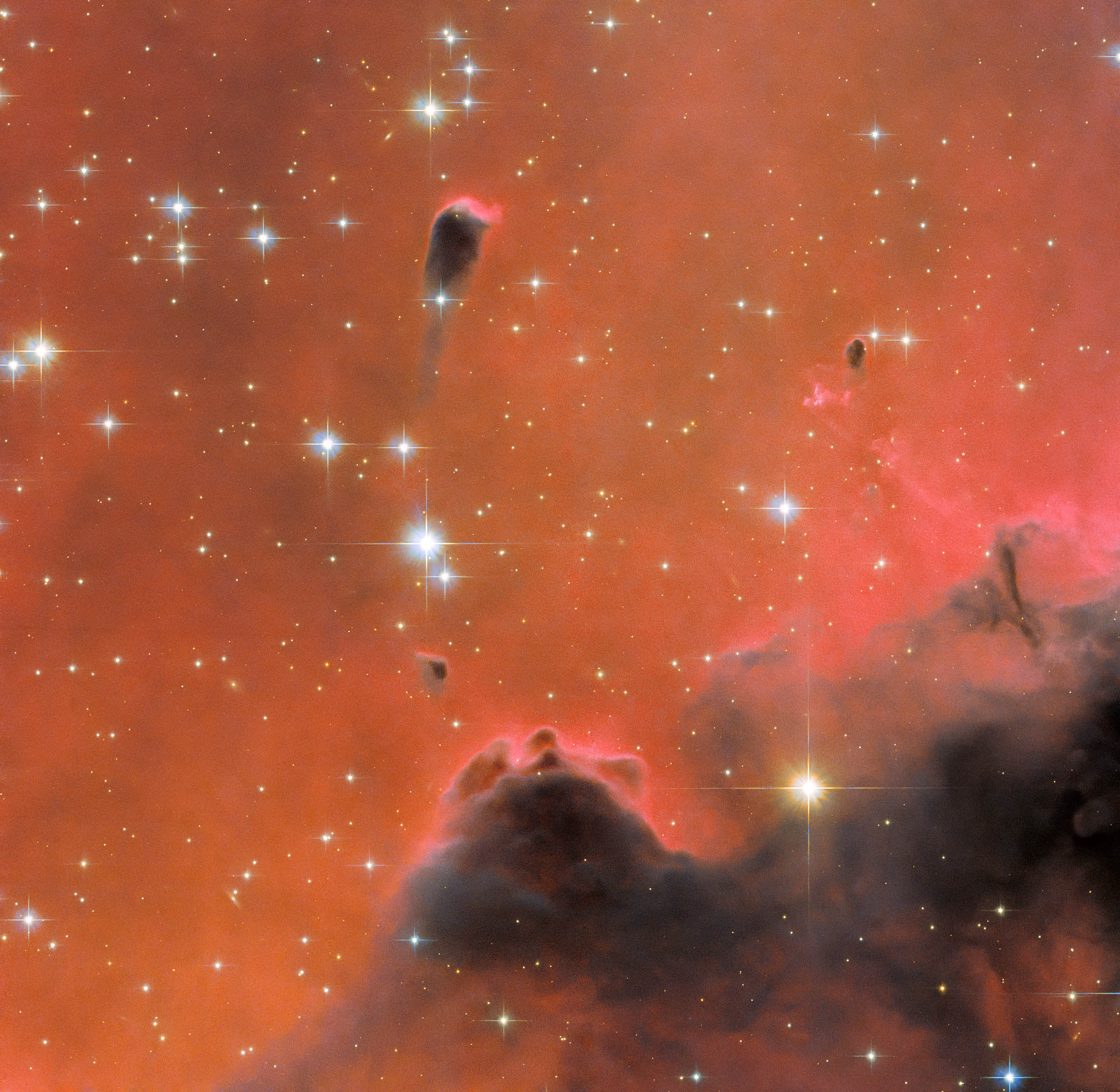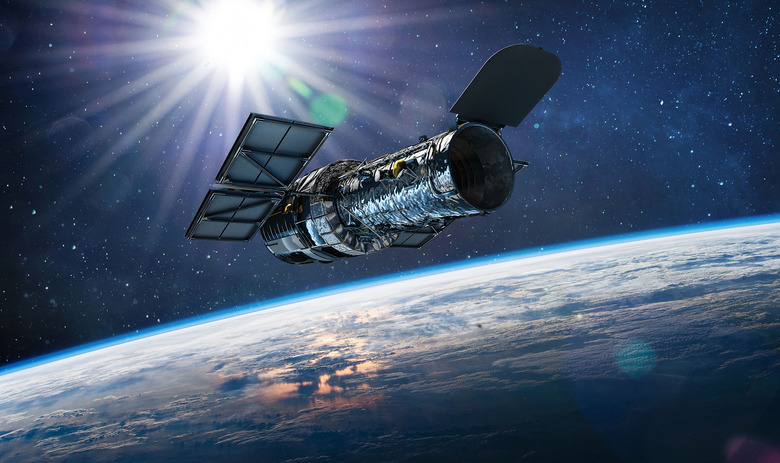The Soul Nebula's Red Glow Looks Stunning In This Hubble Image
Back in December, the European Space Agency released an image of the Soul Nebula, a portion of space located 7,000 light-years away. In the image, the iconic space telescope perfectly captured the red glow of the nebula's free-floating Evaporating Gaseous Globule (frEGG) and some of the stars that call this region of space home.
The Soul Nebula, which is also known as Westerhout 5, is known because of the bright red light that it is suffused with. If you look at the image, which we've included in the article here, you can see the various stars throughout, as well as the frEGG, which is the darkened cloud in the bottom right-hand corner. Despite its age, Hubble continues to deliver unreal images of space's coolest regions.

These dark spots of frEGGs and other Evaporating Gaseous Globules (EGGS) are essentially thick regions of gas that have become so dense it takes them a long time to photoevaporate. While frEGGs can be found in the Soul Nebula, that doesn't mean that EGGS aren't present. These regions of space are known in several iconic parts of space that we have explored, including the Pillars of Creation.
EGGS were only identified recently. You can see more examples of these darkened regions of space in Webb's image of the Pillars of Creation. In the Pillars, EGGS stretch across the ends of the region's bony-like fingers, or pillars, depending on how you look at it. They are usually attached, while frEGGs are detached, as seen in this Hubble capture of the Soul Nebula.
The ESA says that the red light seen in the image here is caused by a type of emission known as H-alpha emission. This light emission only occurs when a very energetic electron with a hydrogen atom loses a set amount of its energy, which causes the electron to become less energetic as it releases the iconic red light seen in this image of the Soul Nebula.
